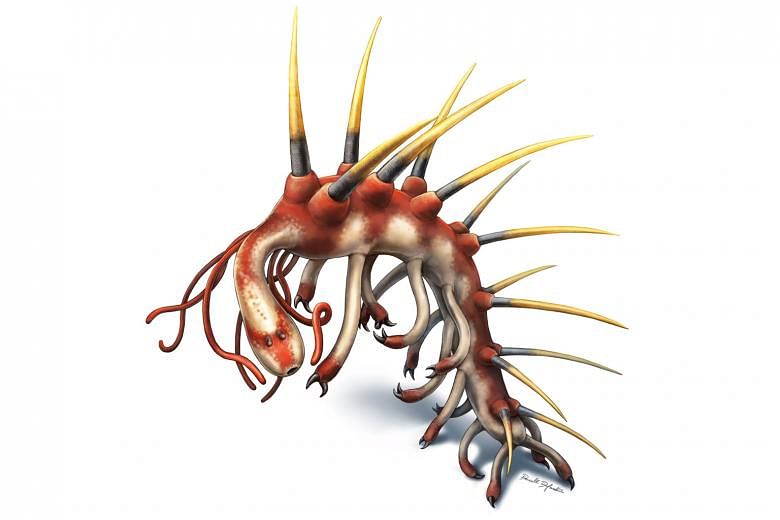WASHINGTON - It was a creature so strange that experts literally could not make head nor tail of it. But scientists said on Wednesday that a new analysis of fossils of Hallucigenia, so named for its fantastical appearance, has given them for the first time a complete understanding of this little sea oddball that lived about 508 million years ago.
Hallucigenia is one of the species emblematic of the Cambrian Period, a pivotal juncture in the history of life on earth when most major groups of animals first appeared and many unusual body designs came and went. "It is nice to finally know rather fundamental things such as how many legs it has, and to know its head from its tail," University of Cambridge palaeontologist Martin Smith said.
Hallucigenia, whose fossils have been unearthed in the Burgess Shale site in the Canadian Rocky Mountains, belongs to a primitive group of velvet worms, animals that still exist today.
Hallucigenia, 10-55mm-long, possessed seven pairs of nail-like spines protruding from its back, with an equal number of pairs of long, flimsy legs underneath tipped with claws. There were three pairs of skinny tentacles towards the head, perhaps used to process food or as antennae.
Hallucigenia has long baffled scientists. In the 1970s, it was thought its back spikes were legs, its legs were tentacles along its back and its head was its tail.
The actual head, the scientists have now learned after using sophisticated imaging techniques on the fossils, is at the end of a long and slender neck resembling a hose-like tube. Near the end of the head were two bean-shaped eyes. "Below the eyes, like an almighty grin, sits a ring of teeth," Dr Smith said.
"It would have been quite a sight," said Royal Ontario Museum palaeontologist Jean-Bernard Caron. The research appears in the journal Nature.
REUTERS

